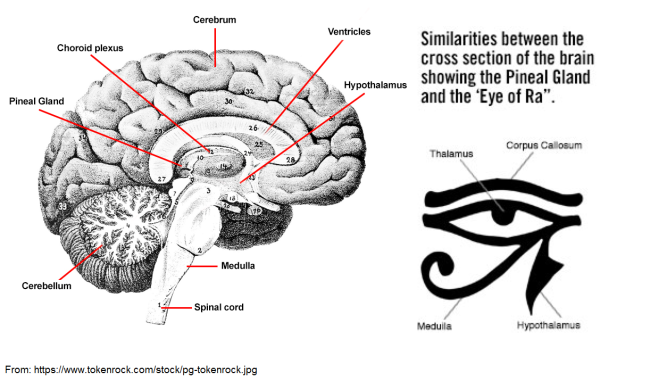The Myths of the Pineal Gland
Among the many COVID-19 conspiracy theories, I recently came across one that’s got an interesting neuroscience twist.
The theory is that infrared thermometers – widely used to screen people for fever – are actually designed to damage the brain’s pineal gland with some kind of harmful rays.
The theory is scientifically absurd (although relying on these thermometers is still not a great idea, because they’re inaccurate), but it’s rather interesting from a historical point of view, because the pineal gland is a brain structure that has long been linked to mysticism and conspiracy.
The pineal gland is a pea-sized body located deep in the brain. Its main function is the secretion of the hormone melatonin, but it has often been ascribed much more mysterious significance.
In the 17th century, Rene Descartes described the pineal gland as the point where the immaterial soul contacts the material body – building on the work of earlier philosophers, who saw it as a kind of valve that controlled the flow of ‘spirits’ within the brain. In the 19th century, the pineal was widely identified with the ‘third eye‘ of Hinduism, and given much spiritual significance.
It has even been suggested that the shape of the pineal is somehow reflected in the ancient Egyptian mystical symbol of the “Eye of Horus”, although personally I don’t see it:

Image showing the supposed similarity between the human brain and Egyptian “Eye of Horus”. From https://www.tokenrock.com/stock/pg-tokenrock.jpg
In the late 20th century, conspiracy beliefs involving the pineal arose, which drew on the reputation of the pineal as the eye of the soul. I believe that the first of these was the idea, dating to the 1990s and still going strong, that water fluoridation is a conspiracy designed to damage the pineal gland, and thus dampen the spiritual or psychic abilities of the population.
Later, mobile phones and Wifi were also accused of causing pineal damage. This argument rests on the unlikely idea that the pineal gland contains piezoelectric crystals, that make it sensitive to electromagnetic waves.
So the new thermometer-pineal theory is just the latest variant of the idea that the pineal gland is uniquely fragile and that it’s under attack by toxic elements of the environment.
None of the pineal-attack theories are based on good science, but their persistence shows that they resonate with many people. I think these theories have a psychological foundation in concerns about modern technology and its effects on our lives.
The mystical pineal gland shrivelling away because of fluoride or Wifi, could almost serve as a metaphor for the toxic effect of modernity on the soul. But while there might be truth in that as a metaphor, that’s all it is.
*** This article has been archived for your research. The original version from Discover Magazine can be found here ***


